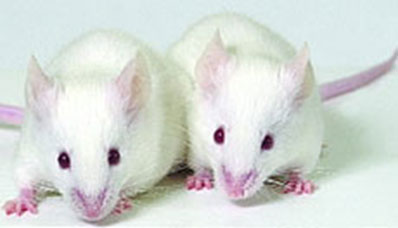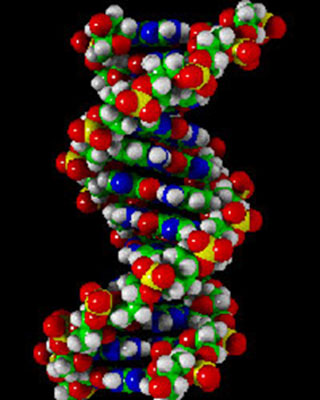We often see the alcohol industry’s enticing advertisements and the media’s hyperbole telling us: “Wine Is Good for You.”
What is frequently overlooked is that it may have some good effects, but its bad effects far outweigh the good. In a response to a query about alcohol, the Qur’an says: [They ask you concerning wine and gambling. Say: In them is a great sin, and some benefit, for men; but the sin is greater than the benefit] (Al- Baqarah 2:219).
Since the Qur’an was revealed, modern science has shown alcohol to be the cause of a number of health problems, cancers included. This has been established over a number of years through a large number of epidemiological studies, in many countries, on individuals from a variety of backgrounds. One study revealed that in the United States, for example, 75 percent of esophageal cancers and 50 percent of oral cavity cancers are attributed to alcohol consumption (Rothman et al, 1980).
Several questions arise in understanding the role of alcohol in the development of cancers. Between the years of 1979 and 1997, several studies, funded by grants from the US National Institutes of Health, were carried out in the author’s laboratory in the University of Arizona to attempt to address these questions. Results were published in several peer-reviewed journals, selections of which are listed at the end of this article.
Posing Questions
The questions raised included the following:
- Besides epidemiology, how can one scientifically prove an association between alcohol and cancer? In order to be fully convinced, we need to positively ascertain the results under conditions that are uniform, and where the only variable is alcohol. The association of alcohol with cancers was found in epidemiological studies, which are burdened with numerous variables, because humans, the subjects of these studies, live under a variety of conditions. Experimental animals such as rats and mice, maintained in air-conditioned rooms under uniformly similar conditions, are normally used as models for diseases, and could be utilized for verifying the relationship of alcohol to cancers.
- In which stage of cancer development is alcohol involved? Cancer development goes through two concrete and consecutive stages: initiation and promotion. Cancer initiation starts with exposure of an organism to a carcinogen (cancer-causing substance) resulting in a mutation in the DNA of the affected cell, which is then passed on to cells arising from it. Promotion follows initiation and includes all the processes that initiated cells go through in order to develop into cancer. It is now generally agreed that although initiation is an essential step for the carcinogenic process to begin, the damaged DNA can be repaired or otherwise eliminated by the immune system. Thus, the effect of the initiating carcinogen may be lost, unless there is promotion. It is all the more important to make this distinction because ethanol, the essential constituent in alcohols, is not carcinogenic (that is, it cannot initiate cancers). Our studies were the first to show that although ethanol does not initiate, it acts as a promoter of cancers.
- Even more importantly, what are the molecular mechanisms underlying alcohol-related cancers? It is essential to determine the molecular mechanisms that are responsible for increase in cancers with alcohol consumption. Only by knowing these factors, will we be able to understand and tackle the disease.
Finding Answers
 Animal models serve as the subjects of choice in some experiments, because, in most cases, the same mechanisms work at the molecular level for humans also. Moreover, it is almost impossible to subject humans to uniform control conditions for comparison purposes, or to cause more serious exposures, such as those that occur in developing cancers.
Animal models serve as the subjects of choice in some experiments, because, in most cases, the same mechanisms work at the molecular level for humans also. Moreover, it is almost impossible to subject humans to uniform control conditions for comparison purposes, or to cause more serious exposures, such as those that occur in developing cancers.
Muslim jurists agree that laboratory animals, bred for the purpose and maintained under humane conditions, could be employed for the greater good and ultimate welfare of humans, as well as animals.
When ethanol, diluted to seven percent in a nutritionally balanced liquid diet, is fed to experimental rats or mice, they become alcohol-dependent, mimicking a human alcoholic. When ethanol is eliminated from the diet, it results in the onset of withdrawal symptoms – as witnessed in body tremors. There is a similar increase in blood lipids, with a proliferation of endoplasmic reticulum in liver cells.
Animals that served as controls in our experiments received the same total caloric intake, except that carbohydrates were substituted for ethanol in the diet. Since, as stated above, ethanol is not carcinogenic, we selected methylbenzyl-nitrosamine, an esophagus-specific carcinogen, to induce tumors in the animal esophagus.
This selected carcinogen is known to occur naturally in parts of China and Africa where the incidence of esophageal cancers is high. Thus our selection reflects an actual epidemiological situation. (Please note that here on we refer to methylbenzyl-nitrosamine only as carcinogen. Also the terms tumors and cancers are used interchangeably).
Alcohol Promotes Development of Cancers
A number of studies were conducted by the author to determine the effect of ethanol on the development of tumors in the esophagus of experimental rats or mice. Of significance, however, were the experiments where animals, after their exposure to carcinogen, were fed an ethanol-containing diet until the end of the study.
The results showed that ethanol consumption caused a significant increase in the number and size of esophageal lesions (observable by changed morphology). Even more remarkable was the result that the number of lesions which progressed into tumors was also greatly increased with ethanol consumption (Mufti, Becker, and Sipes, 1989). This shows that alcohol is involved in the processes that cause promotion of cancer development.
Furthermore, an examination of these tumors showed that with ethanol there was a significant thickening of esophageal epithelium (the cellular lining of the esophagus). Also, more of the thickened cells penetrated into the inner wall of esophagus, with some areas of multinucleated cells bleeding in the subcutaneous tissue (Mufti 1991). This observation confirmed the progression towards tumors with alcohol-associated promotion processes.
Molecular Mechanisms Involved in Alcohol-Related Cancers
 A- Disordered Lipid Metabolism: It is well known that alcohol consumption disturbs the metabolism of lipids. When the esophageal tissue lipids from the above experiments were analyzed for their fatty acids, it showed a significant increase in unsaturated fatty acids, especially of the longer chain variety, with ethanol consumption (Nachiappan et al, 1993). Unsaturated fatty acids are unstable; the longer the chain, the more unstable it is becoming subject to breakdown through oxidation into lipid peroxides. This would explain the consequent increase in lipid peroxidation, i.e. the generation of free radicals by ethanol. In addition, there was a pronounced increase in specific unsaturated fatty acids (called eicosanoids) and their compounds (such as arachidonates), whose presence is associated with excessive cell proliferation (Mufti et al, 1997). These observations show that ethanol creates a disorder in the metabolism of lipids and their products. This results in the generation of products that induce the increased cell proliferation that occurs in developing cancer.
A- Disordered Lipid Metabolism: It is well known that alcohol consumption disturbs the metabolism of lipids. When the esophageal tissue lipids from the above experiments were analyzed for their fatty acids, it showed a significant increase in unsaturated fatty acids, especially of the longer chain variety, with ethanol consumption (Nachiappan et al, 1993). Unsaturated fatty acids are unstable; the longer the chain, the more unstable it is becoming subject to breakdown through oxidation into lipid peroxides. This would explain the consequent increase in lipid peroxidation, i.e. the generation of free radicals by ethanol. In addition, there was a pronounced increase in specific unsaturated fatty acids (called eicosanoids) and their compounds (such as arachidonates), whose presence is associated with excessive cell proliferation (Mufti et al, 1997). These observations show that ethanol creates a disorder in the metabolism of lipids and their products. This results in the generation of products that induce the increased cell proliferation that occurs in developing cancer.
B- Free Radical Generation: Free radicals are generated with a loss of an electron in an atom or molecule of a compound making it highly reactive in the cell. Free radicals occur in a number of diseases. A variety of tumor promoters generate free radicals, and we found that chronic ethanol consumption results in producing lipid peroxide free radicals.
Furthermore, when ethanol was used as a promoter of esophageal tumors, there was a further increase in lipid peroxidation. And when the animals thus treated were injected with – or their diet supplemented with – vitamin E, it decreased lipid peroxidation along with a decrease in the number of tumors observed (Odeleye et al, 1991). This is of interest because free radical production, as well as cancers induce